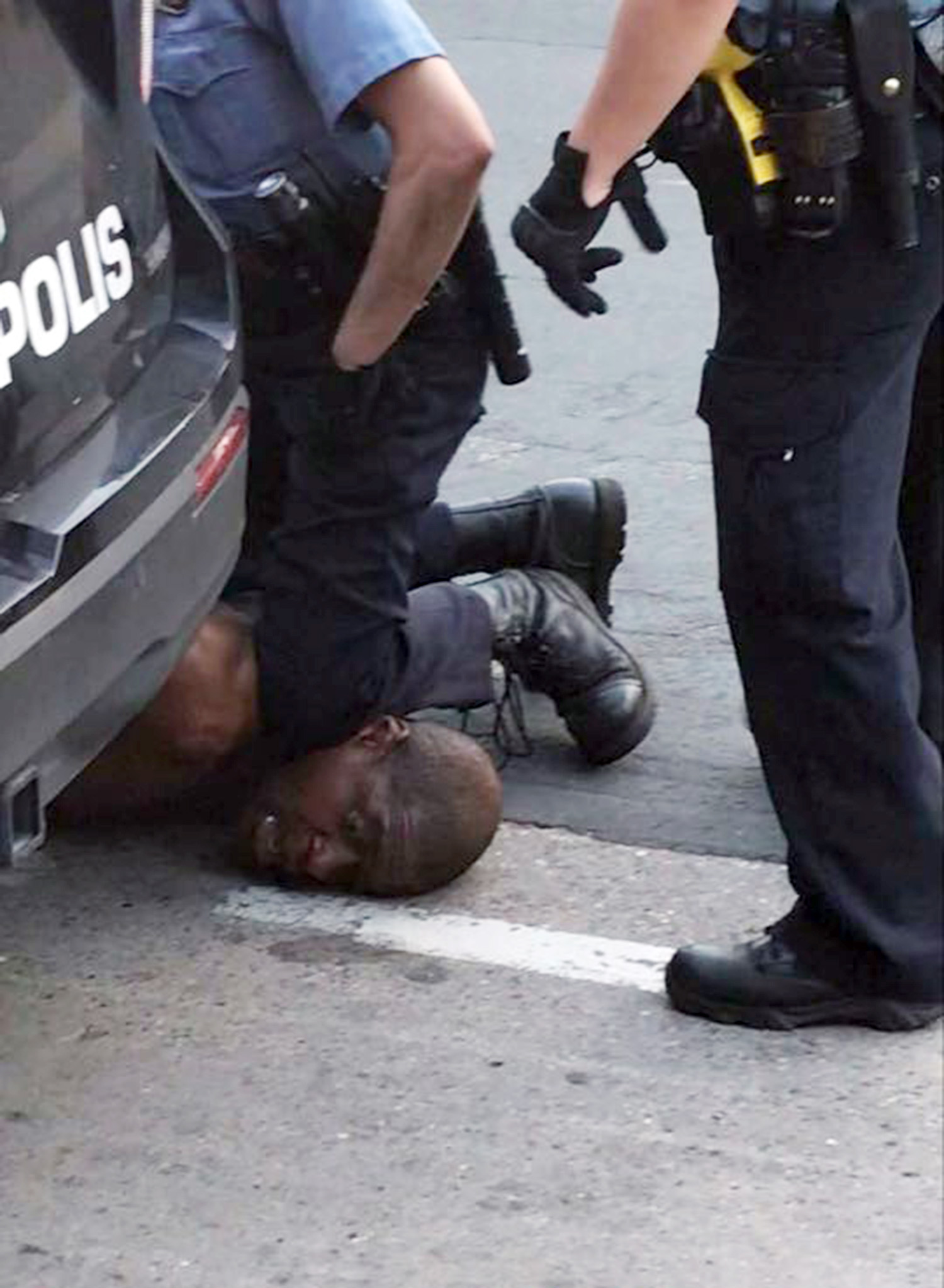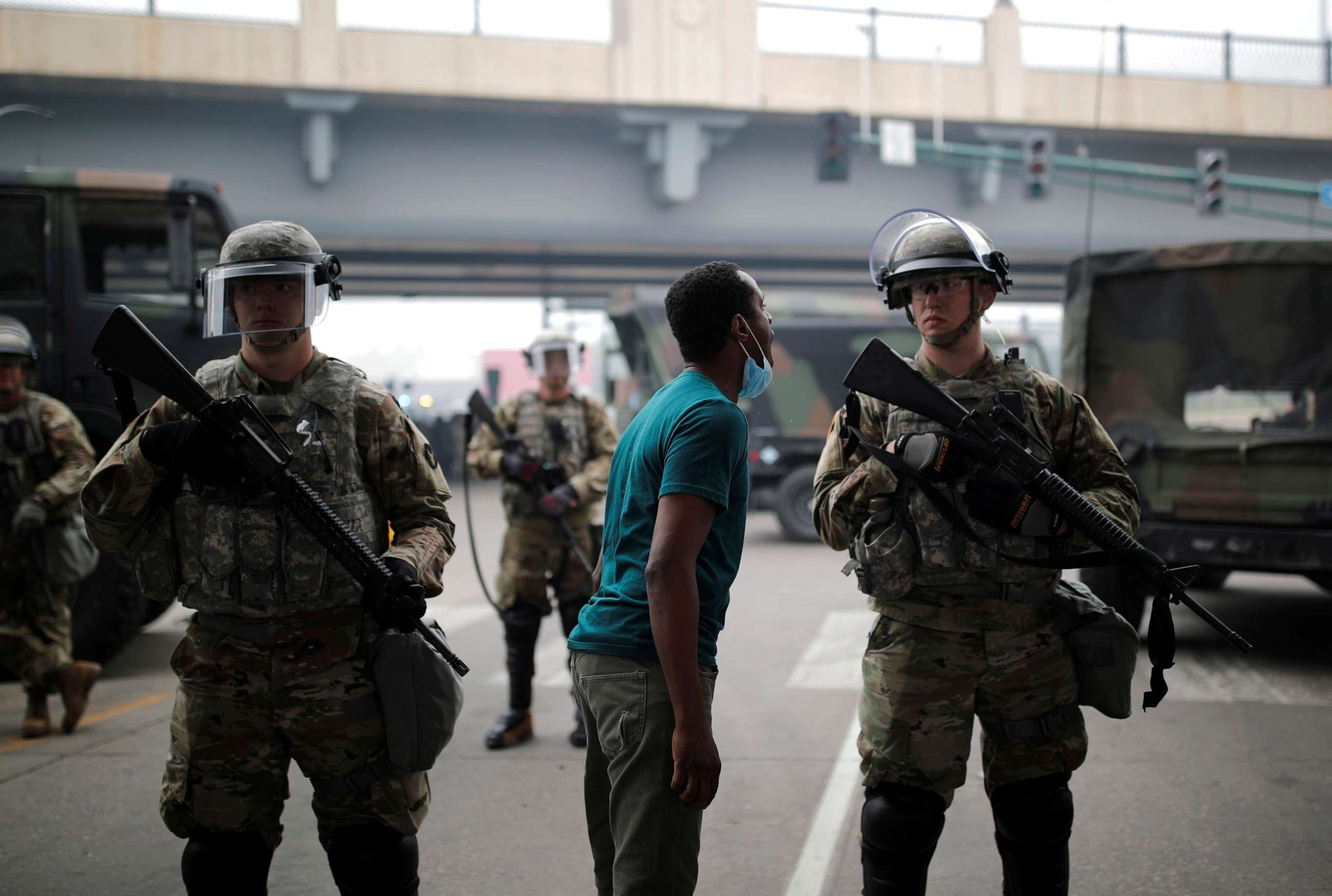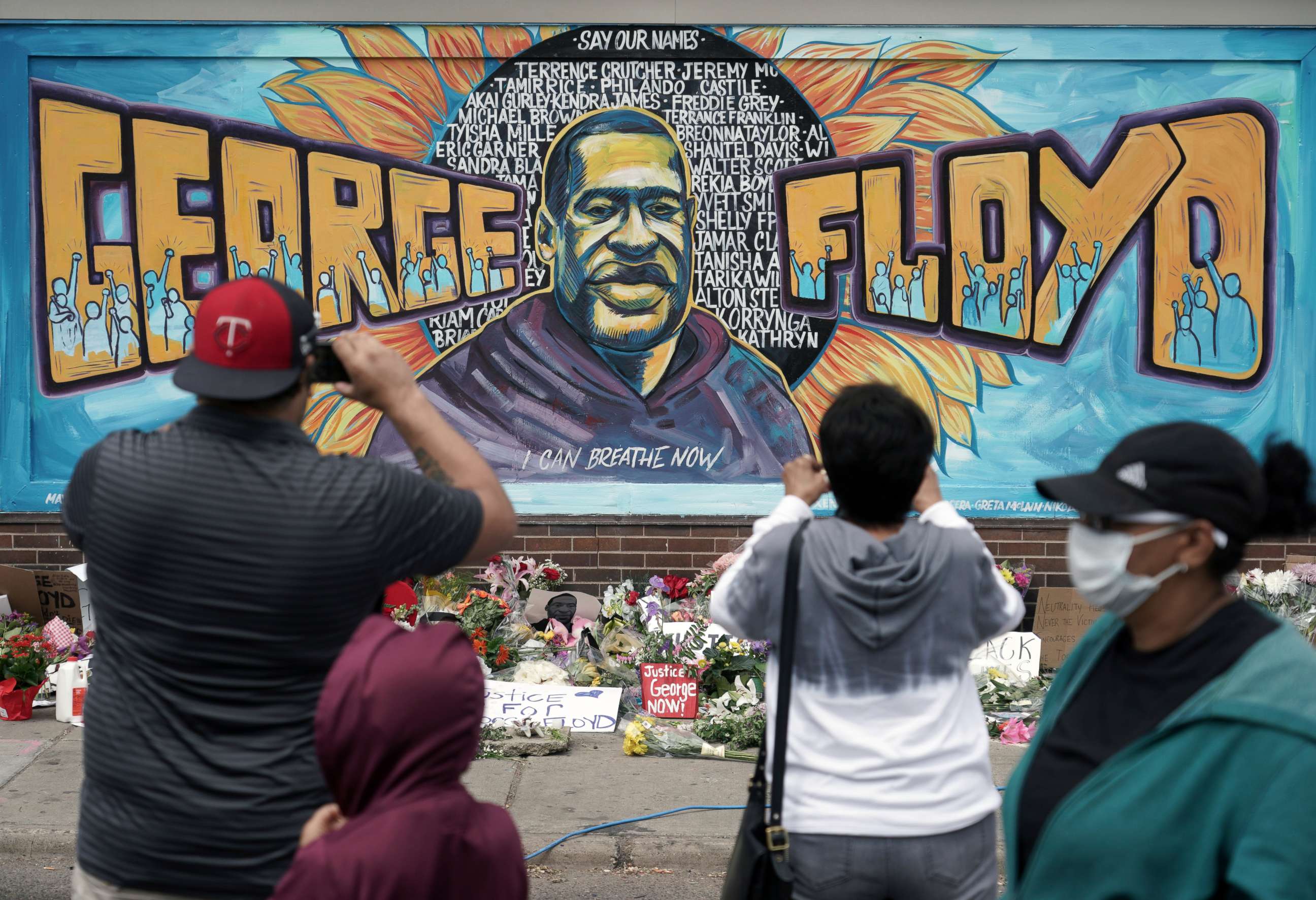Derek Chauvin had his knee on George Floyd's neck for nearly 9 minutes, complaint says
Nearly three of nine minutes, Floyd was non-responsive, court documents state.
Derek Chauvin, the police officer charged with third-degree murder in connection with the death of George Floyd, had his knee on Floyd's neck for nearly nine minutes -- including almost three minutes while Floyd was unresponsive -- according to court documents.
Video of Chauvin pinning Floyd to the ground with his knee pressed into Floyd's neck went viral earlier this week, sparking widespread protests across the country that have taken a violent turn in Minnesota as outrage mounts.
In the video, Floyd can be heard repeatedly saying, "I can't breathe."

On Friday, prosecutors in Hennepin County, Minnesota, released what they say are new details about the incident from analysis of police body camera footage and other evidence that paint a harrowing picture of the last few minutes of Floyd's life.
The complaint claims that Chauvin had his knee on Floyd's neck for a total of 8 minutes and 46 seconds, including two minutes and 53 seconds of which Floyd was non-responsive.
Chauvin was not the first responding officer to the 911 call reporting that Floyd had allegedly used a fake $20 bill to make a purchase at a local Cup Foods, according to the complaint.
Officers Thomas Lane and J.A. Kueng arrived at the scene and were reported to Floyd's car, where they found him in the driver's seat with two adult passengers.
Officer Lane began speaking with Floyd and then pulled his gun out and pointed it at Floyd's open window, asking him to show his hands, according to the complaint. When Floyd put his hands on the steering wheel, Lane holstered his gun and then ordered him out of the car and pulled him out of the vehicle, the statement reads.

Floyd "resisted being handcuffed," according to the complaint, but once he was in cuffs he "became compliant" as Lane sat him on the ground and asked for his name, identification and told him why he was being arrested.
Lane and Keung then stood Floyd up and attempted to walk him to their squad car. At 8:14 p.m., however, the complaint says Floyd stiffened up, fell to the ground and told the officers he was claustrophobic.
Officers Chauvin and Tou Thao then arrived in a separate squad car.
The officers made several attempts to get Floyd in the backseat of the police car from the driver's side, according to the complaint, which says Floyd "did not voluntarily get in the car and struggled with the officers by intentionally falling down," and "refusing to stand still."
While standing outside the car, Floyd began saying that he could not breathe, the statement reads. The officers then attempted to get him into the car from the passenger side.
Next, Chauvin pulled Floyd out of the passenger side of the squad car and he landed face down and still handcuffed, according to the complaint. Two of the officers held his legs down and then Chauvin placed his left knee on the back of Floyd's neck.
As Floyd said "I can't breathe" and "Mama" and "please," the complaint states that the officers stayed in their positions. An officer told him, "You are talking fine."

Lane eventually asked, "Should we roll him on his side?" Chauvin responded, "No, staying put where we got him."
When Lane said he was "worried about excited delirium," Chauvin said, "That's why we have him on his stomach," the statement reads.
Floyd went face down on the ground with Chauvin's knee in his neck at 8:19:38 p.m., according to the complaint. At 8:24:24, Floyd stopped moving. Approximately a minute later, video "appears to show Mr. Floyd ceasing to breathe or speak."
Keung checked for a pulse on Floyd's right wrist, said he couldn't find one, the complaint states, and still none of the officers moved from their positions.
At 8:27:31 p.m., Chauvin removed his knee from Floyd's neck, according to the statement. An ambulance was called to the scene and Floyd was pronounced dead at Hennepin County Medical Center shortly after.
The autopsy revealed no physical findings that support a diagnosis of traumatic asphyxia or strangulation. Mr. Floyd had underlying health conditions including coronary artery disease and hypertensive heart disease. The combined effects of Mr. Floyd being restrained by the police, his underlying health conditions and any potential intoxicants in his system likely contributed to his death.
Chauvin faces charges of third-degree murder and second-degree manslaughter in the death of Floyd.
Prosecutors say the investigation is still ongoing and more arrests and charges are anticipated.
ABC News' Whitney Lloyd contributed to this report.




